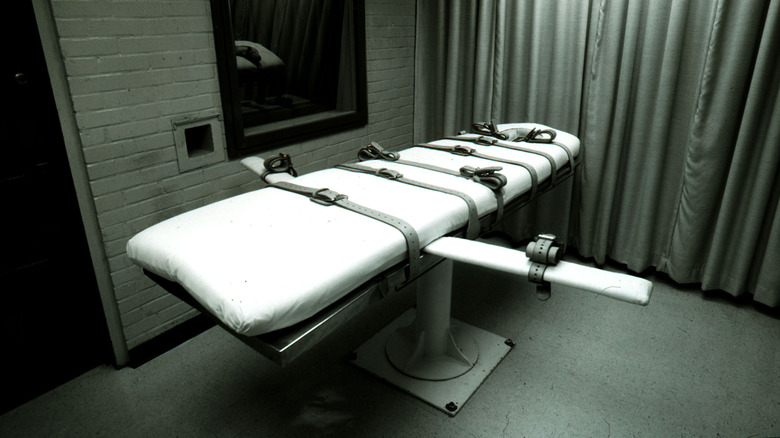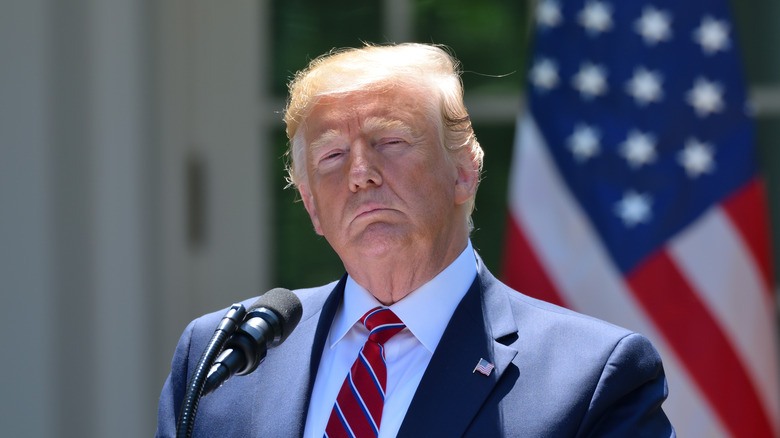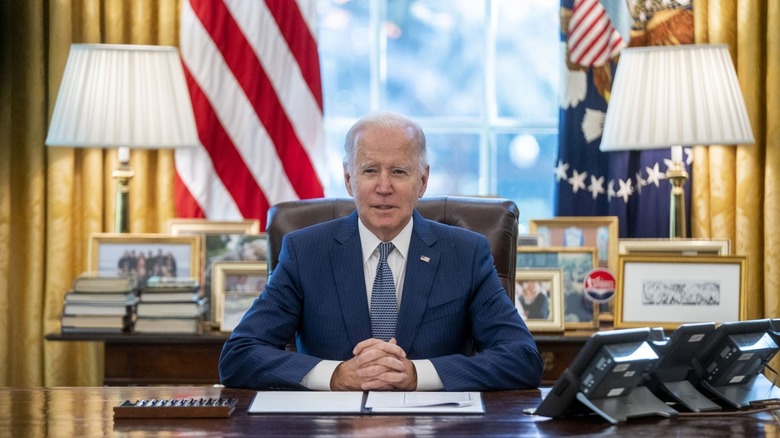The American President Who Oversaw The Most Federal Executions In The Last 100 Years
Throughout history, the death penalty has been a form of punishment that has been carried out pretty commonly. But in the modern Western world, many governments have turned away from capital punishment. According to a poll conducted by Gallup in 2021, when asked the question, "Do you support the death penalty for a person convicted of murder?" 54% of respondents were in support of the policy, a sharp decrease since 1994, 80% deemed the death penalty as justified in the same scenario, and only 16% opposed it.
There have been many debates about the ethics of carrying out federal executions, with many decrying the institutional practice, often stating how the government may execute an innocent person or that it is simply wrong to kill another human being, even if that person committed a crime, according to Gallup. In 2003, the Justice Department failed to obtain some of the drugs needed to carry out death sentences via lethal injection. As a result, under President George W. Bush's administration, the United States put a hiatus on all federal executions. But that didn't mean federal executions were over for good. In fact, there would be one particular president that would oversee more federal executions than any other in over 100 years.
The death penalty under Pres. Trump
The 17-year-hiatus of federal executions ended when President Donald Trump resumed the policy in July 2020. As a result, three people were executed in a week. This was the highest amount of death row inmates that were executed by the federal government in a single week in over 50 years. But these weren't all the executions the administration carried out. By the time the former president ended his term in office in 2021, 13 people on death row were executed, the most since the 1930s.
The Trump administration also carried out a rare occurrence with the federal execution of David Higgs, whose sentence was carried out during the presidential transition period. The last U.S. president to carry out federal executions during this window was Grover Cleveland in the 1890s. President Joe Biden publicly stated during his run for office in 2020 that he opposed the policy but has been criticized for his previous support of the policy during the 1990s. In fact, the legislature Biden worked on as a senator has resulted in some criminals receiving the death penalty.
The future of the death penalty
Since the Biden administration has been in control of the Department of Justice, a moratorium was put in place to end the death penalty on the federal level. Before former President Trump's record, the title was held by Franklin D. Roosevelt, who oversaw ten federal executions and six military executions during his presidency. However, a key difference here is that all 13 federal executions under Trump took place in under a year, whereas Roosevelt's were conducted between 1936-1943, according to the Federal Bureau of Prisons.
The last time more than ten inmates were executed by the federal government in one year was in 1896. The Trump Administration also oversaw the federal execution of a woman; the first time since 1953. Though the future of the death penalty is by no means certain, legal scholars, human rights organizations, and voters will continue to debate this central question: Is the death penalty a primitive, cruel form of punishment that possibly takes the lives of innocents, or does it serve justice to those who have suffered the worst crimes known to man?


